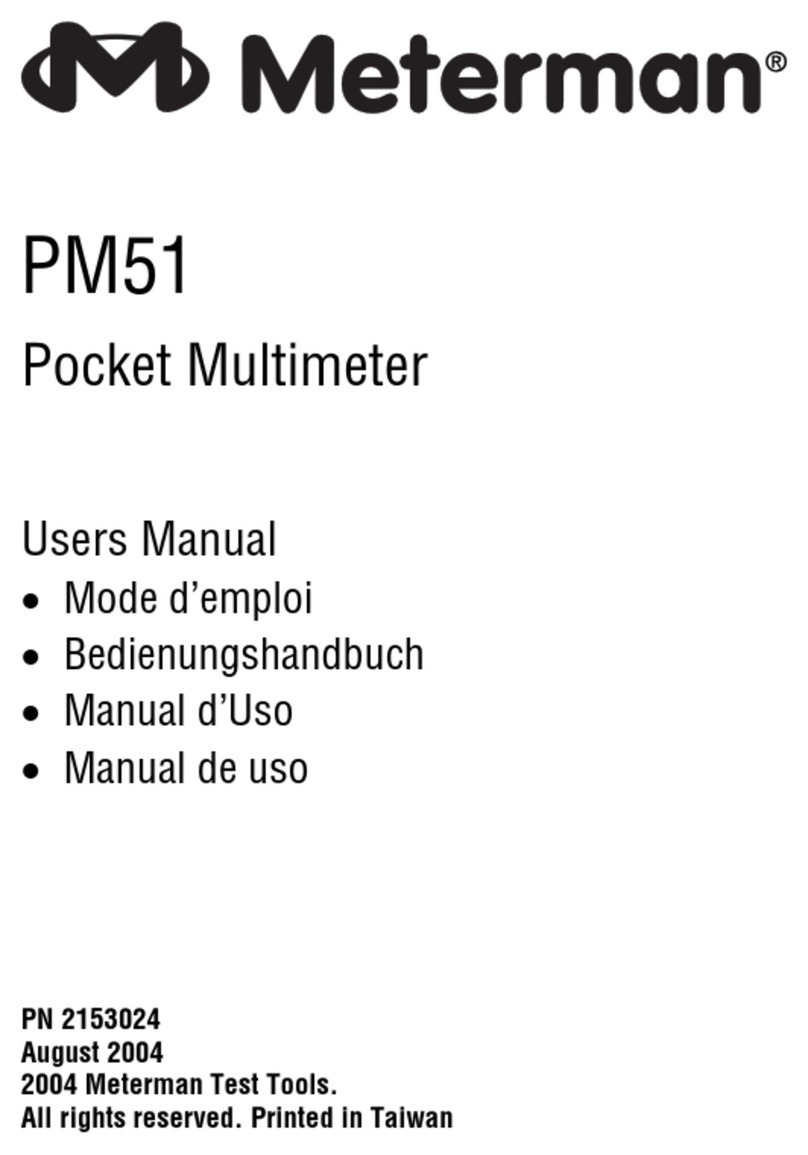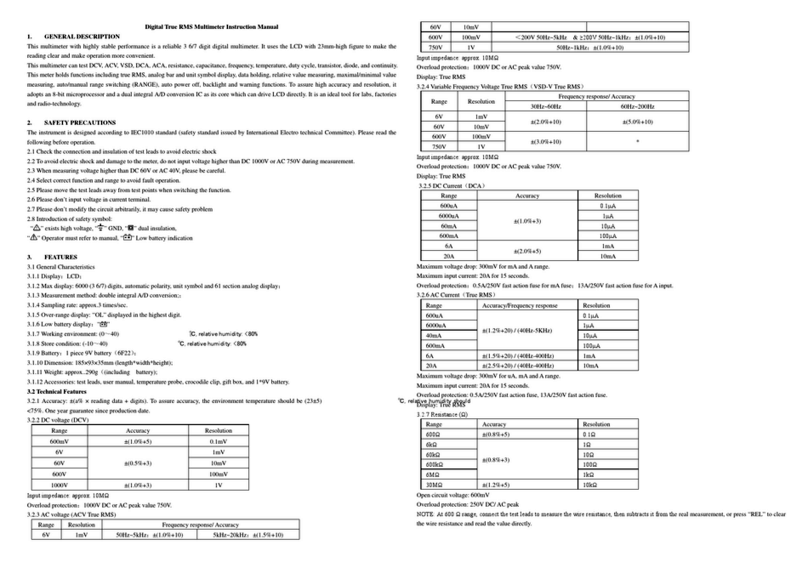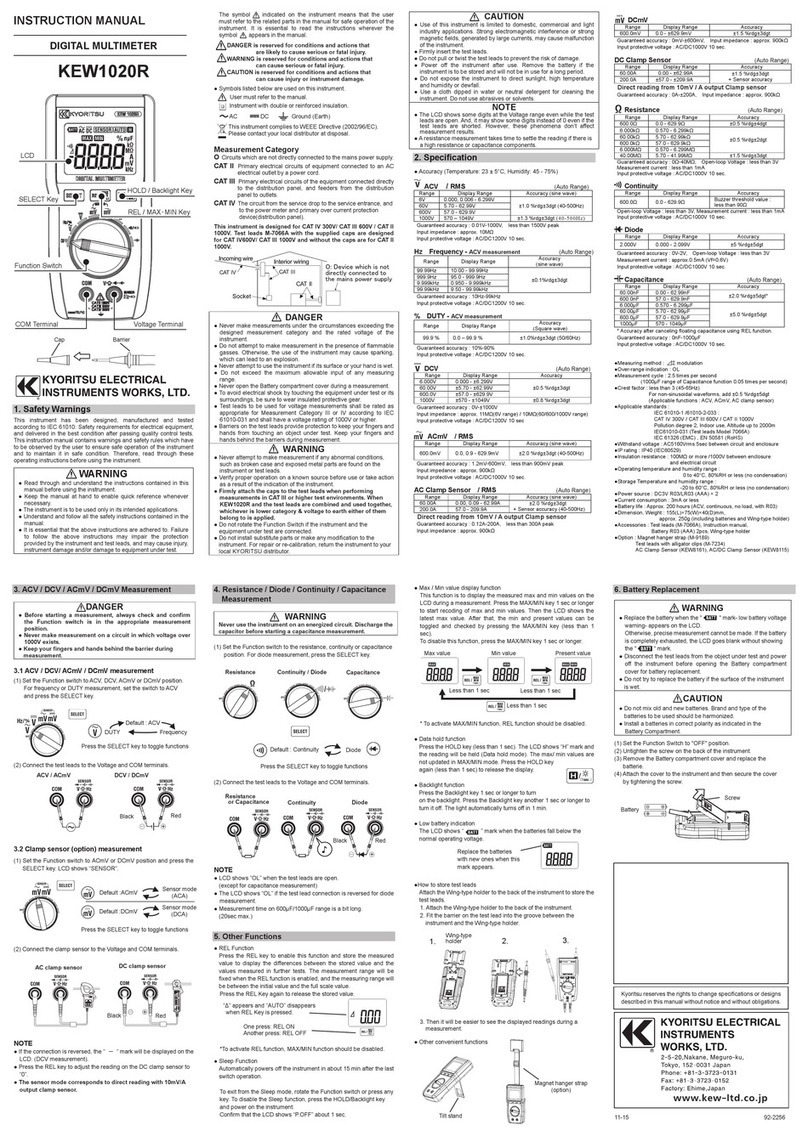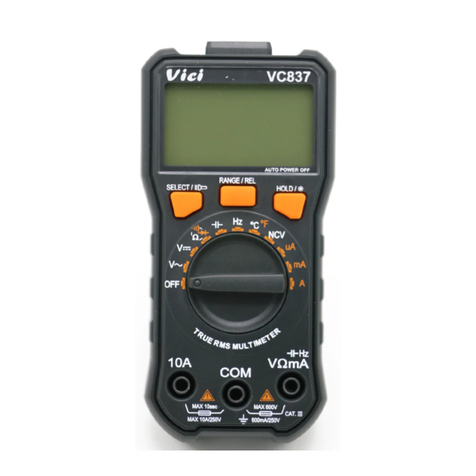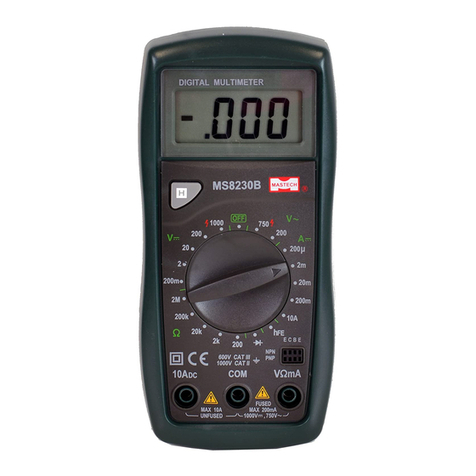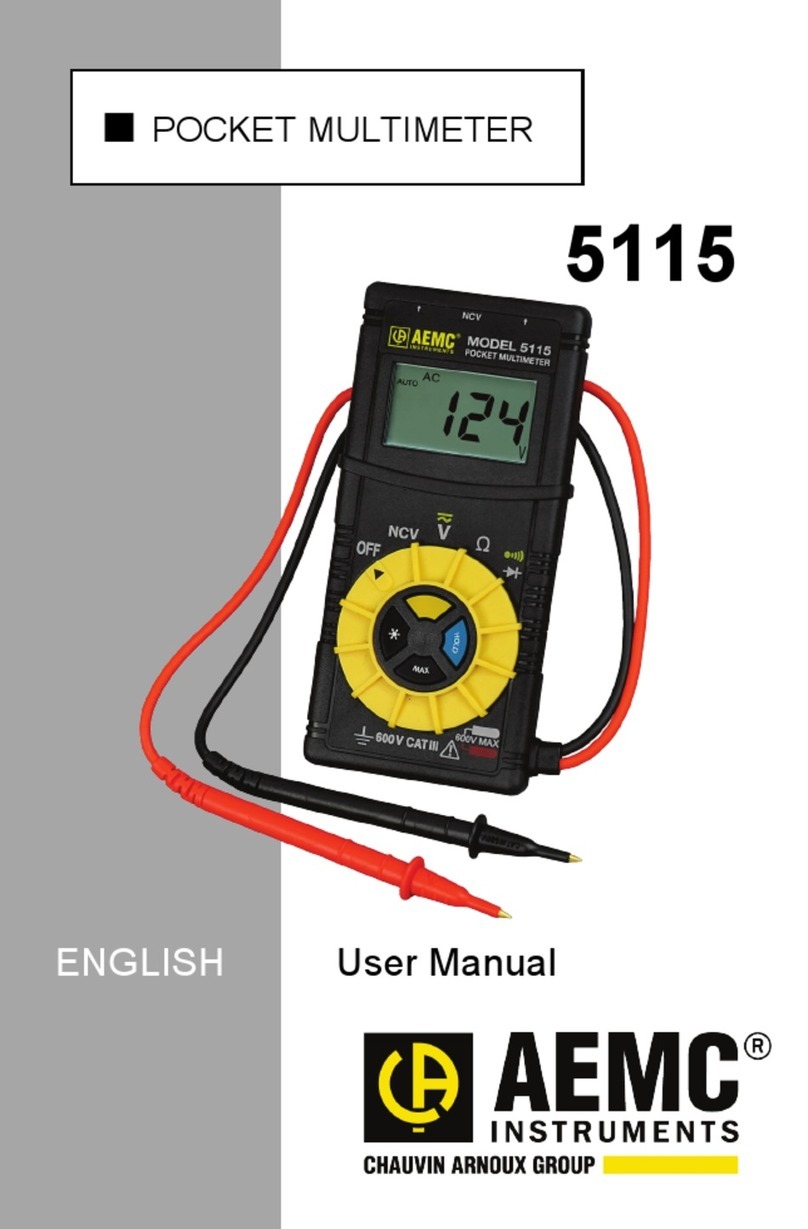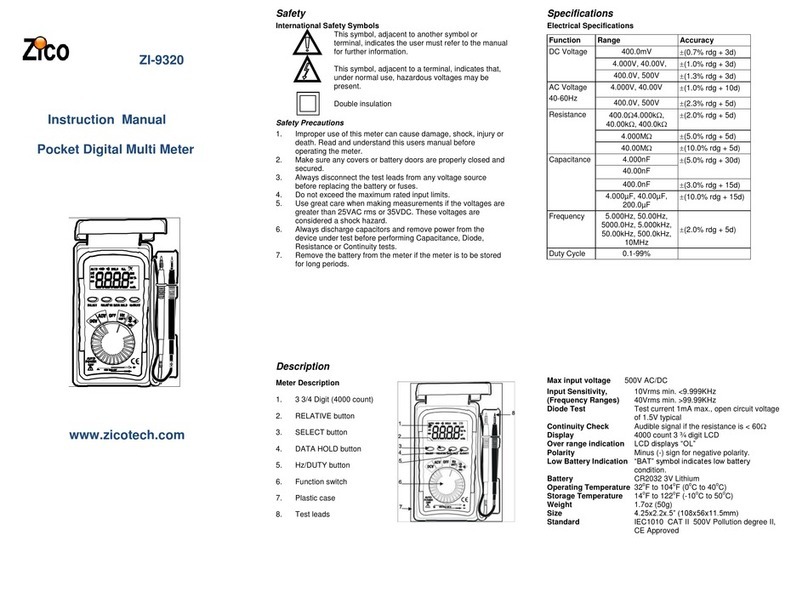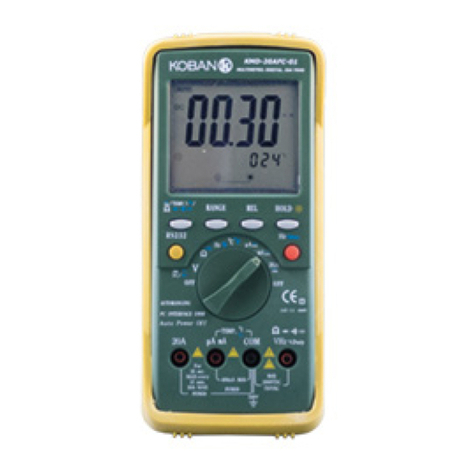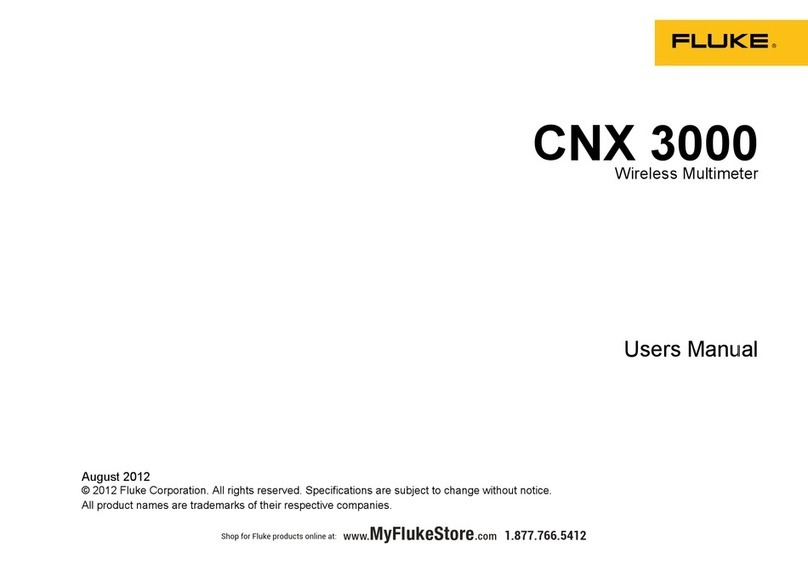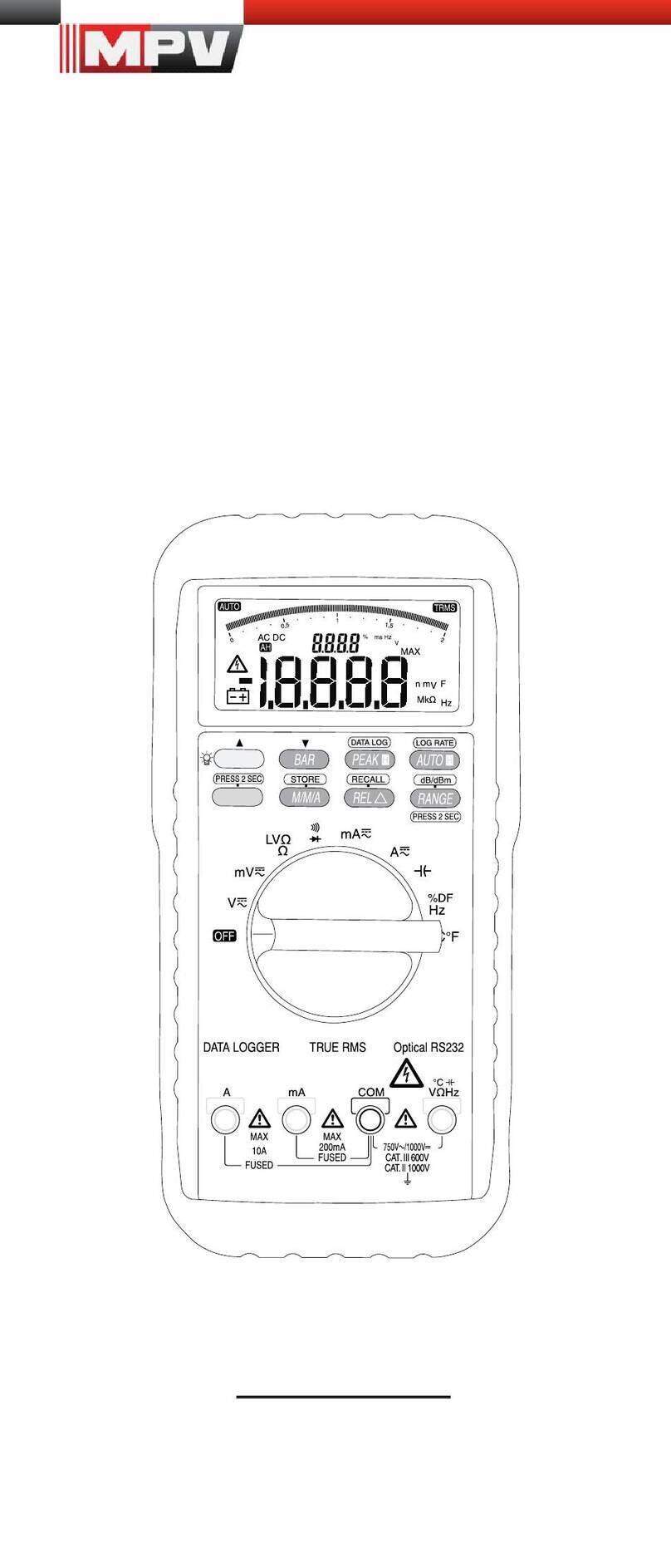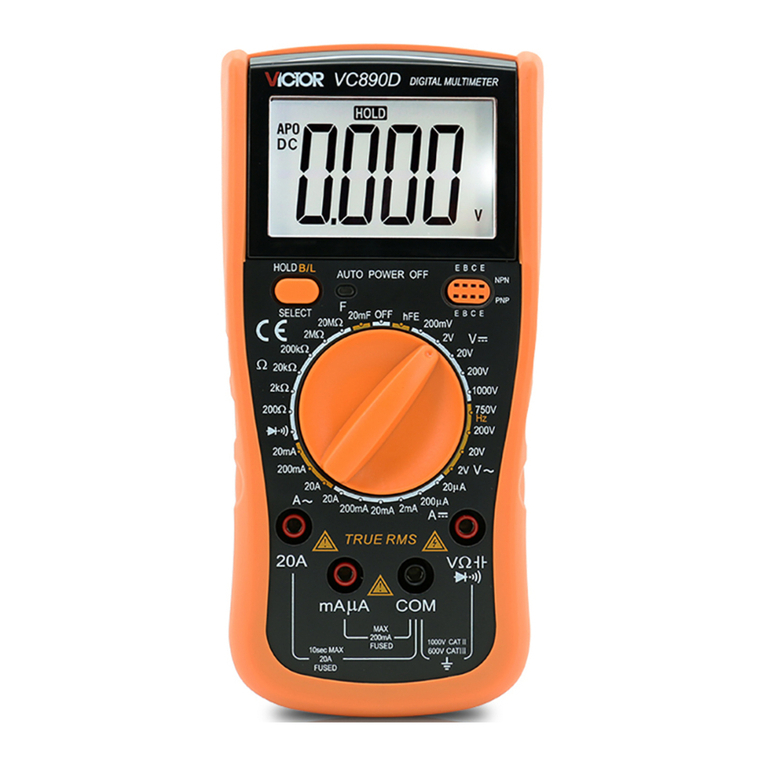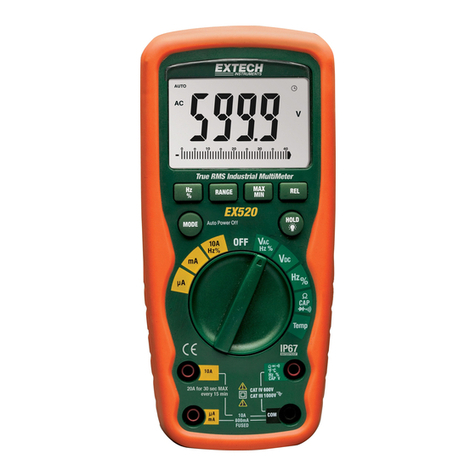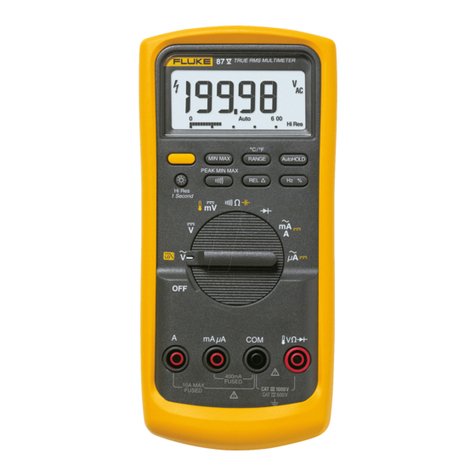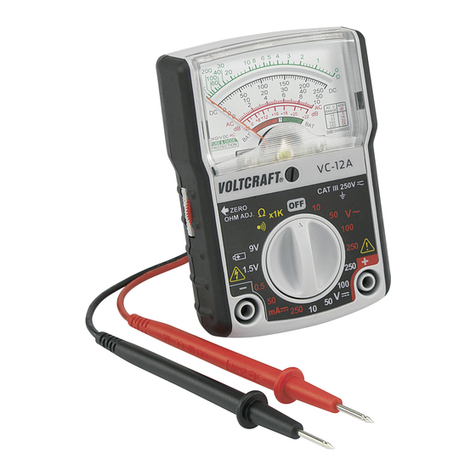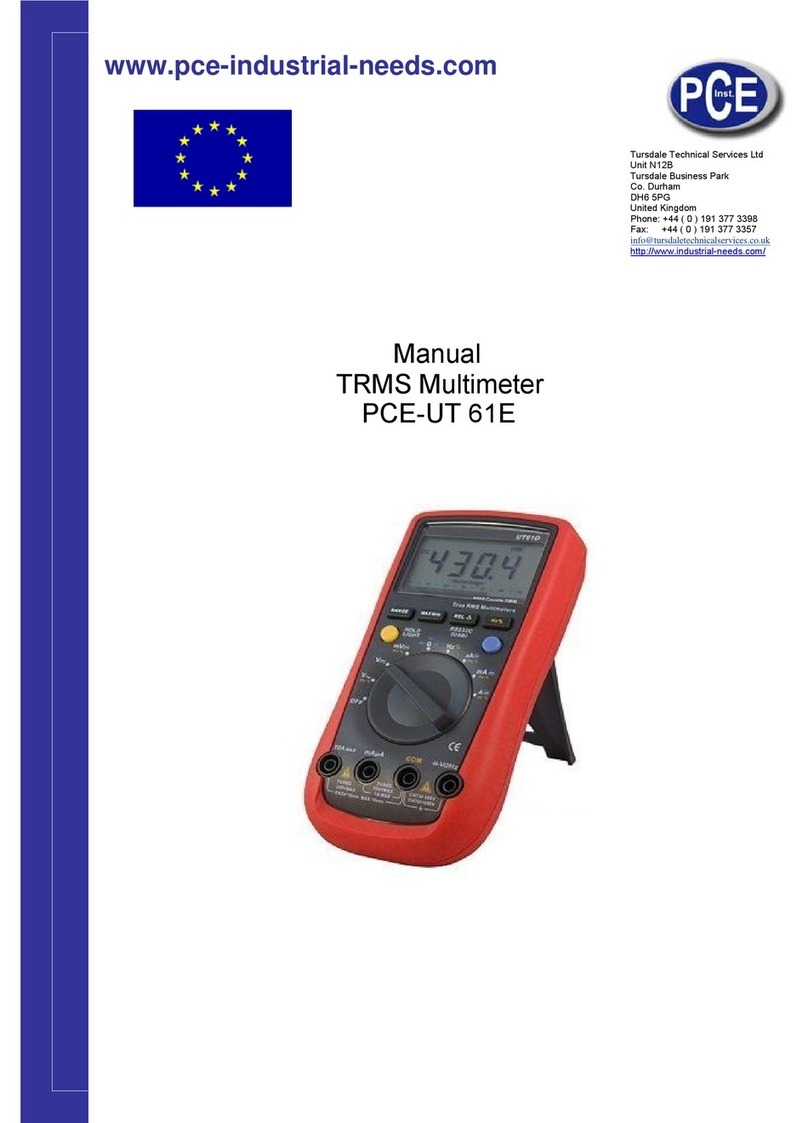NIMEX NI 96000 User manual

ELCART
ELCART DISTRIBUTION SPA via Michelangelo Buonarroti, 46 - 20093 Cologno Monzese (Milano) ITALY
Manuale di istruzioni/Scheda tecnica
La divulgazione dei dati contenuti in questa scheda è da ritenersi un servizio puramente informativo e non costituisce alcun vincolo da parte della Elcart in merito a prestazioni ed utilizzo del prodotto.
The divulgation of data contained on this technical sheet are exclusively for informational reasons and establish no link on behalf of Elcart regard to thr performances and the usa of the product.
La divulgacion de los datos contenidos en esta ficha son un servicio unicamente informativo y no constituyen ningun vinculo de parte de Elcart respecto a las prestaciones y uso del producto.
ART. 09/09600-00 PAGINA 1 DI 12
TAVOLA DEI CONTENUTI
1. INFORMAZIONI DI
SICUREZZA
1.1 Preliminari
1.2 Cosa fare e non fare
1.3 Simboli
1.4 Precauzioni
2. DESCRIZIONE
2.1 Nomi delle parti
2.2 Interruttori. Pulsanti e
Ingressi
2.3 Display
3. SPECIFICHE
3.1 Generali
3.2 Indice Tecnico
4. ISTRUZIONI OPERATIVE
4.1 Selezione Funzioni
4.2 Selezione Gamme
4.3 Massimo valore misurato
4.4 Lettura holding
4.5 Retroilluminazione
4.6 Uso dei pulsanti
4.7 Preparazione alla
misurazione
4.8 Misurazione Tensione CC
4.9 Misurazione Tensione CA
4.10 Test Diodo
4.11 Test Continuità
4.12 Misurazione Resistenza
4.13 Misurazione Corrente CC
4.14 Misurazione Corrente CA
1.2 Cosa fare e non fare
1.2.1 Utilizzare il giusto ingresso, funzione, gamme.
1.2.2 Non effettuate misurazioni oltre al limite di protezione
VSHFLÀFDWR
1.2.3 Non toccate le parti di metallo dei puntali durante le
misurazioni.
1.2.4 Mantenete le vostre dita lontane dal circuito durante la
misurazione di una tensione superiore a 60VCC o 30VCA.
1.2.5 Non effettuate misurazioni di tensione superiore a
1000V.
1.2.6 Utilizzate la gamma di misurazione più alta se non
conoscete il valore da misurare.
1.2.7 Non collegate il multimetro a qualsiasi fonte di tensione
mentre state misurando corrente, resistenza, diodi o test
continuità.
1.2.8 Scollegate i puntali dal circuito prima di cambiare la
gamma di misurazione o la funzione.
1.2.9 Controllate eventuali tensioni di picco che potrebbero
generarsi sul circuito e che potrebbero danneggiare lo
strumento.
1.2.10 Non misurate resistenza, diodi o continuità su circuiti
alimentati.
1.2.11 Non utilizzate lo strumento vicino a gas esplosivi,
vapori o sporcizia.
1.2.12 In caso di misurazioni anormali, fate controllare il
PXOWLPHWURGDSHUVRQDOHTXDOLÀFDWR
1.2.13 Non utilizzate lo strumento senza il coperchio
SRVWHULRUHÀVVDWR
1.2.14 Non conservate il multimetro in un area esposta a
luce solare, alta temperature, umidità e condensa.
1.3 Simboli
Importante informazione di sicurezza, seguite le
MULTIMETRO DIGITALE MULTIFUNZIONE NIMEX ART. 09/09600-00 NI-9600
MANUALE D’ISTRUZIONE
1. INFORMAZIONI DI SICUREZZA
ATTENZIONE
UTILIZZATE LO STRUMENTO CON ESTREMA CURA.
Un uso improprio del multimetro potrebbe provocare il
malfunzionamento e il danneggiamento dello strumento.
Seguite le normali norme di sicurezza suggerite in
questo manuale. Tutti i dispositivi di protezione del
multimetro possono essere danneggiati da un uso non
FRUUHWWRGDSDUWHGHOO·XWLOL]]DWRUH
Questo multimetro digitale auto range rispetta le
normative di sicurezza per gli strumenti di misura
elettronici IEC-61010-1, grado di inquinamento 2 e
standard di sovraccarico CAT III 600V.
Seguite tutte le istruzioni di sicurezza indicate in questo
manuale per un corretto utilizzo del multimetro.
1.1 Preliminari
3HUXWLOL]]DUHTXHVWRPXOWLPHWURFRUUHWWDPHQWHO·XWHQWH
deve seguire le seguenti norme di sicurezza:
1) protezione contro il pericolo di scariche elettriche.
2) protezione contro usi impropri del multimetro.
&RQWUROODWHDOPRPHQWRGHOO·DFTXLVWRVHLOPXOWLPHWURq
rotto o danneggiato.
1.1.3 In caso di parti danneggiate, comunicatelo
immediatamente al vostro rivenditore.
1.1.4 Il perfetto utilizzo del multimetro nel rispetto delle
normative di sicurezza si ottiene solo con i puntali in
dotazione. Se si rendesse necessario sostituire i puntali,
utilizzate puntali dello stesso modello o con le stesse
caratteristiche elettriche.
1.1.5 Utilizzate i puntali in dotazione per assicurarvi la
massima sicurezza. Se necessario, sostituiteli con puntali
delle stesse caratteristiche elettriche.
4.15 Misurazione Frequenza
4.167 Test integrità cavi di rete
4.18 Funzione Non-contact
voltage
4.19 Precauzioni operative per
il coperchio
4.20 Autospegnimento
5. MANUTENZIONE
5.1 Sostituzione Batteria
5.2 Sostituzione Fusibile
5.3 Sostituzione Puntali
6. ACCESSORI

ELCART
ELCART DISTRIBUTION SPA via Michelangelo Buonarroti, 46 - 20093 Cologno Monzese (Milano) ITALY
Manuale di istruzioni/Scheda tecnica
La divulgazione dei dati contenuti in questa scheda è da ritenersi un servizio puramente informativo e non costituisce alcun vincolo da parte della Elcart in merito a prestazioni ed utilizzo del prodotto.
The divulgation of data contained on this technical sheet are exclusively for informational reasons and establish no link on behalf of Elcart regard to thr performances and the usa of the product.
La divulgacion de los datos contenidos en esta ficha son un servicio unicamente informativo y no constituyen ningun vinculo de parte de Elcart respecto a las prestaciones y uso del producto.
ART. 09/09600-00 PAGINA 2 DI 12
indicazioni del manuale
Potrebbe essere presente una tensione pericolosa
Doppio Isolamento (protezione classe II)
CAT III – over-voltage (installation) category III, pollution
degree 2 per IEC61010-1, referring to the level of impulse
withstand voltage protection provided.
Compliance with European Union (EU) directives
Terra (massa)
Fusibile
1.4 Precauzioni
1.4.1 Non cercate di riparare lo strumento togliendo il
pannello posteriore mentre il multimetro è alimentato.
1.4.2 Prima di rimuovere il pannello posteriore, assicuratevi
di aver tolto qualsiasi alimentazione dal multimetro
1.4.3 Per evitare scosse elettriche e errate misurazioni,
sostituite la batteria appena apparirà il simbolo “ ” sul
display.
1.4.4 Per evitare rischi di incendi, sostituire il fusibile con uno
nuovo delle stesse caratteristiche elettriche. F 10A/500V
and F200mA/1000V (rapido).
1.4.5 Non utilizzate panni abrasivi o solventi per pulire lo
strumento. Utilizzate un panno umido e un detergente delicato.
1.4.6 Spegnete il multimetro se non lo utilizzate.
1.4.7 Rimuovete la batteria in caso di lungo inutilizzo.
1.4.8 Utilizzare lo strumento in un ambiente con alte
radiazioni a radio frequenza (circa 3V/m) potrebbe
LQÁXHQ]DUHODSUHFLVLRQHGHOODPLVXUD,OULVXOWDWRSRWUHEEH
HVVHUHSHVDQWHPHQWHLQÁXHQ]DWRGDOFDPSRPDJQHWLFR
2. DESCRIZIONE
- The meter is a portable specialized measuring instrument
with a large digital LCD, as well as a backlight source for
easy reading. The range selector designed for single-
hand operation makes measurement easy. Overload
protection and low battery indication are provided. It is an
ideal multifunctional instrument with scores of practical
applications for professional, factory, school, amateur and
home use.
- Il multimetro ha entrambe le funzioni auto/manual range.
- Il multimetro ha la funzione di autospegnimento.
- Il multimetro ha la funzione data hold.
- Il multimetro ha la funzione misurazione massimo.
,OPXOWLPHWURKDO·LQGLFDWRUHGLEDWWHULDVFDULFD
2.1 Nomi delle parti.
1)LED indicatore di Non-contact
voltage detection
2)LCD (Display a cristalli liquidi)
3)Data hold (HOLD)
4)Maximum measurement (MAX)
5)Pulsante di selezione Range
(RANGE)
6)Pulsante di selezione Funzione
(FUNC)
7)Pulsante retroilluminazione
8) Pulsante Test
9)Pannello
10) Interruttore Rotativo
7HUPLQDOLP$ȝ$9ȍ
12) Terminale COM
13) Terminale 10A
14) Coperchio di sicurezza.
2.2 Pulsanti, Interruttori e Ingressi
Pulsante HOLD Per memorizzare le misurazioni.
Pulsante MAX Per memorizzare il massimo valore misurato.
Pulsante RANGE Per selezionare la funzione auto e
manuale
Pulsante FUNC Per selezionare le diverse funzioni.
Pulsante Retroilluminazione Per accendere o spegnere la
retroilluminazione.
Pulsante TEST Per la misurazione.
Terminale 10A
7HUPLQDOHP$ѥ$9ї
Terminale COM
AC (corrente alternata)
DC (corrente continua)
AUTO Auto range
їOhms (Resistenza)
V Volts (Tensione)
AAmperes (Corrente)
Hz Hertz (Frequenza)
ѥPN0 Simboli di unità: micro, milli, kilo and million
Buzzer per Continuità
Misurazione Diodi
MAX Misurazione massima
HLa lettura è memorizzata
Batteria scarica
Telefono standby
Telefono sta suonando
Telefono alzato
La linea RING è misurata collegata al puntale rosso.
La linea TIP è misurata collegata al puntale rosso.
Segnale Audio
1 - 2 Coppia cavi 1-2
3 - 6 Coppia cavi 3-6
4 - 5 Coppia cavi 4-5
7 - 8 Coppia cavi 7-8
SHIELD Cavo schermato
OPEN Circuito aperto
SHORT Corto circuito
REVERSED Connessione rovesciata
MISWIRE Miswiring
SPLIT PAIRS Split pair
3. SPECIFICHE
3.1 Generali
3.1.1 Opzione funzione autorange e manuale.
3.1.2 Protezione sovraccarico per ogni gamma di
misurazione.
3.1.3 Display: LCD.
3.1.4 Massimo valore visualizzato: 1999 digits.
,QGLFD]LRQH 3RODULWj DXWRPDWLFD ¶¶ SHU SRODULWj
negativa
,QGLFD]LRQHVRYUDFFDULFR¶/·R¶/·
3.1.7 Indicazione Unità: Unità di misura di funzione e
energia.
3.1.8 Giudizio suoneria: standby o telefono alzato.
3.1.9 Valutazione di interruzioni telefoniche e tracciato cavi
telefonici.
3.1.10 Valutazione integrità cavi di rete, Circuiti aperti, corto
circuiti, miswiring, spit pair, connessione inversa dei cavi di
rete e integrità schermatura.
3.1.11 Funzione Non-contact voltage.
3.1.12 Tempo autospegnimento: 15 min
6SHFLÀFD )XVLELOH )$9 )P$9

ELCART
ELCART DISTRIBUTION SPA via Michelangelo Buonarroti, 46 - 20093 Cologno Monzese (Milano) ITALY
Manuale di istruzioni/Scheda tecnica
La divulgazione dei dati contenuti in questa scheda è da ritenersi un servizio puramente informativo e non costituisce alcun vincolo da parte della Elcart in merito a prestazioni ed utilizzo del prodotto.
The divulgation of data contained on this technical sheet are exclusively for informational reasons and establish no link on behalf of Elcart regard to thr performances and the usa of the product.
La divulgacion de los datos contenidos en esta ficha son un servicio unicamente informativo y no constituyen ningun vinculo de parte de Elcart respecto a las prestaciones y uso del producto.
ART. 09/09600-00 PAGINA 3 DI 12
(rapido)
3.1.14 Indicazione batteria scarica: verrà visualizzato il
simbolo ” ”
3.1.15 Alimentazione: 6F22 9V batteria
3.1.16 Temperatura di utilizzo: 0°C~40°C
3.1.17 Temperatura di conservazione: -10°C~50°C
3.1.18 Dimensioni: 195×92×55mm
3.1.19 Peso: circa 400g (batterie incluse)
3.2 Indice tecnico
3.2.1 Tensione CC
Range Risoluzione Precisione
200mV 0.1mV
±(0.5% della lettura +5 digits)
2V 1mV
20V 0.01V
200V 0.1V
1000V 1V ±(0.8% della lettura +5 digits)
Range Risoluzione Precisione
200μA0.1μA
±(1.2% della lettura +5 digits)
2000μA1μA
20mA 0.01mA
200mA 0.1mA
2 A 0.001A ±(2.0% della lettura +5 digits)
20 A 0.01A
Range Risoluzione Precisione
200μA0.1μA
±(1.5% della lettura +5 digits)
2000μA1μA
20mA 0.01mA
200mA 0.1mA
2 A 0.001A ±(3.0% della lettura +5 digits)
20 A 0.01A
Range Risoluzione Precisione
±(0.8% della lettura +5 digits)
.
.
.
0
Range Risoluzione Precisione
20kHz 10Hz ± (1,5% della lettura + 5 digits)
Range Risoluzione Funzione
1mV 9HUUjYLVXDOL]]DWDO·DSSURVVLPDWLYD
caduta di tensione del diodo.
Range Risoluzione Funzione
Suonerà il buzzer se la resistenza è
LQIHULRUHDL
Range Risoluzione Precisione
200mV 0.1mV
±(0.8% della lettura +5 digits)
2V 1mV
20V 0.01V
200V 0.1V
1000V 1V
- Max. tensione di ingresso: 1000V DC
NOTA:
Nelle gamme di misurazioni di bassa tensione, il risultato
SRWUHEEH QRQ HVVHUH VWDELOH SHU O·HOHYDWD VHQVLELOLWj GHOOR
strumento.
3.2.2 Tensione CA
- Max. tensione di ingresso: 750V AC
- Risposta in Frequenza: 40~400Hz
5LVSRVWDPHGLDYDORUHHIÀFDFHGLXQ·RQGDVLQXVRLGDOH
NOTA:
Nelle gamme di misurazioni di bassa tensione, il risultato
SRWUHEEHQRQHVVHUHVWDELOHSHUO·HOHYDWDVHQVLELOLWjGHOOR
strumento.
3.2.3 Resistenza
3URWH]LRQHGLVRYUDFFDULFRѥ$P$JDPPDIXVLELOH
200mA/1000V (rapido)
10A gamma: fusibile 10A/500V (rapido)
0D[FRUUHQWHGLLQJUHVVRѥ$P$MDFNJDPPDѥ$
2000uA
ѥ$P$MDFNP$UDQJHP$
$MDFN$
3.2.7 Corrente CA
3.2.4 Test Diodi
3.2.5 Test corto circuiti
3.2.6 Corrente CC
- Protezione di sovraccarico:
ѥ$P$JDPPDIXVLELOHP$9UDSLGR
10A gamma: fusibile 10A/500V (rapido)
0D[ FRUUHQWH GL LQJUHVVR ѥ$P$ MDFN ѥ$ JDPPD
2000uA
ѥ$P$MDFNP$JDPPDP$
$MDFN$
- Risposta in Frequenza: 40~400Hz
5LVSRVWDPHGLDYDORUHHIÀFDFHGLXQ·RQGDVLQXVRLGDOH
3.2.8 Frequenza
4. ISTRUZIONI OPERATIVE
4.1 Selezione Funzione
1)Premete il tasto "FUNC" per muovervi tra le funzioni di
misurazione di corrente CA e CC.
2) Premete il tasto "FUNC" per muovervi tra le funzioni di
test diodi e continuità.
4.2 Selezione Gamma
1) Quando accendete il multimetro, sarà attivata la funzione
autorange per tutte le misurazioni.
2) Premendo il tasto "RANGE" per utilizzare la funzione
manuale. Ogni volta che premete il tasto, passerete alla
gamma di misurazione più alta.
3) Premete il tasto “RANGE” per 2 secondi per tornare alla
funzione autorange.
4.3 Massimo Valore Misurato
1)La funzione valore massimo può essere utilizzata per la
misurazione di corrente e tensione.
2) Per utilizzare questa funzione durante una misurazione,
premete il tasto MAX e il valore più alto misurato apparirà
sul display.
3) Premendo di nuovo il tasto “MAX” il multimetro tornerà
alla funzione normale di misurazione.

ELCART
ELCART DISTRIBUTION SPA via Michelangelo Buonarroti, 46 - 20093 Cologno Monzese (Milano) ITALY
Manuale di istruzioni/Scheda tecnica
La divulgazione dei dati contenuti in questa scheda è da ritenersi un servizio puramente informativo e non costituisce alcun vincolo da parte della Elcart in merito a prestazioni ed utilizzo del prodotto.
The divulgation of data contained on this technical sheet are exclusively for informational reasons and establish no link on behalf of Elcart regard to thr performances and the usa of the product.
La divulgacion de los datos contenidos en esta ficha son un servicio unicamente informativo y no constituyen ningun vinculo de parte de Elcart respecto a las prestaciones y uso del producto.
ART. 09/09600-00 PAGINA 4 DI 12
4.4 Funzione HOLD
1) Durante le operazioni di misura, premendo il tasto
”HOLD” il valore misurato in quel momento verrà mantenuto
sul display.
2) Premendo di nuovo il tasto “HOLD” il multimetro tornerà
alla funzione normale di misurazione.
4.5 Retroilluminazione
1) Tenendo premuto per circa 2 secondi il tasto “ “ si
accenderà la lampadina di retroilluminazione del display.
2) Premendo di nuovo per altri 2 secondi il tasto " " si
spegnerà la lampadina.
3) Se, per accendere la retroilluminazione non premete il
tasto " " per più di 2 sec., la lampadina rimarrà accesa per
soli 15 sec.
4.6 Utilizzare il pulsante TEST
1) Per iniziare la misurazione premete il pulsante "TEST"
quando lo strumento è nella modalità Telefono (controllo
linee telefoniche) Toni (giudizio e tracciabilità linee
telefoniche), NetCable (controllo integrità cavi di rete).
2) Dopo la misurazione, il risultato lampeggerà sul display.
Premendo di nuovo il tasto “TEST” il risultato smetterà di
lampeggiare e sarete pronti per una nuova misura.
4.7 Preparazione alla misurazione
1) Selezionate la gamma di misura con la manopola e
accendete lo strumento. Se la batteria è scarica (circa
9LOGLVSOD\YLVXDOL]]HUjLOVLPEROR ", indicandovi
di sostituire la batteria.
2) Il simbolo “ ” vicino alla linea di ingresso, indica che
la tensione, o la corrente, di ingresso non deve superare i
valori indicati.
3) Selezionate con la manopola la funzione e la gamma
di misurazione desiderata. Nella funzionalità manuale, e
non sapete il valore da misurare, selezionate la gamma di
misurazione più alta.
4) Collegate i puntali al circuito da misurare.
4.8 Misurazione tensione CC
ATTENZIONE
Esiste il rischio di scosse elettriche. Prestate particolare
attenzione durante la misurazione di tensioni elevate.
Non collegate lo strumento a tensioni superiori a
1000VCC che potrebbero danneggiare il circuito
elettrico interno allo strumento.
4.8.1 Inserite il puntale nero nel terminale COM e quello
rosso al terminale V. Selezionate la gamma di misurazione
di tensione CC.
4.8.2 Con il tasto RANGE selezionare la funzione manuale
o autorange.(tenendo premuto il tasto per piu di 1 sec)
4.8.3 Collegate i puntali in parallelo alla tensione da
misurare.
4.8.4 Sul display verrà visualizzato il risultato della
misurazione. Il multimetro vi indicherà automaticamente la
polarità del risultato.
NOTE:
1) Durante misurazioni a bassa tensione, potrebbero essere
visualizzati dei valori anche se i terminali non sono collegati
DO FLUFXLWR 4XHVWR q GRYXWR DOO·HOHYDWD VHQVLELOLWj GHOOR
strumento. Quando i puntali verranno collegati al circuito, il
valore verrà visualizzato correttamente.
2) Nella funzionalità manuale, se il display visualizzerà “OL”
R´2/µVLJQLÀFDFKHODJDPPDGLPLVXUD]LRQHVHOH]LRQDWD
qWURSSREDVVDHGRYUHWHVHOH]LRQDUQHXQDSLDOWDÀQFKp
non risolverete il problema.
3) Nella funzionalità manuale, e non sapete il valore da
misurare, selezionate la gamma di misurazione più alta.
$EEDVVHUHWHLOOLYHOORÀQRDWURYDUHTXHOORSLDGDWWR
4.9 Misurazione tensione CA
ATTENZIONE
Esiste il rischio di scosse elettriche, prestate attenzione
specialmente durante le misure di alta tensione.
Non tentate di misurare tensioni superiori a 750VCA
rms che potrebbero danneggiare il circuito interno
dello strumento.
4.9.1 Inserite il puntale nero nel terminale COM e quello
rosso al terminale V.
4.9.2 Selezionate la funzione:
4.9.3 Con il tasto RANGE selezionare la funzione manuale
o autorange.(tenendo premuto il tasto per piu di 1 sec)
4.9.4 Collegate i puntali in parallelo al circuito da misurare.
4.9.5 Sul display verrà visualizzato il risultato della
misurazione.
NOTE:
1) Durante misurazioni a bassa tensione, potrebbero essere
visualizzati dei valori anche se i terminali non sono collegati
DO FLUFXLWR 4XHVWR q GRYXWR DOO·HOHYDWD VHQVLELOLWj GHOOR
strumento. Quando i puntali verranno collegati al circuito, il
valore verrà visualizzato correttamente.
2) Nella funzionalità manuale, se il display visualizzerà “OL”
R´2/µVLJQLÀFDFKHODJDPPDGLPLVXUD]LRQHVHOH]LRQDWD
qWURSSREDVVDHGRYUHWHVHOH]LRQDUQHXQDSLDOWDÀQFKp
non risolverete il problema.
3) Nella funzionalità manuale, e non sapete il valore da
misurare, selezionate la gamma di misurazione più alta.
$EEDVVHUHWHLOOLYHOORÀQRDWURYDUHTXHOORSLDGDWWR
4.10 Test Diodi
4.10.1 Inserite il puntale nero nel terminale COM e quello
rosso al terminale .
4.10.2 Selezionate con la manopola la funzione
4.10.3 Premete il tasto "FUNC" per entrare nella modalità
test diodi.
&ROOHJDWHLOSXQWDOHURVVRDOO·DQRGRHTXHOORQHURDO
catodo del diodo per il test.
4.10.5 Sul display verrà visualizzato il risultato della
misurazione.
NOTE:
,O PXOWLPHWUR YLVXDOL]]HUj O·DSSURVVLPDWLYD WHQVLRQH GL
caduta del diodo.
2) Se avete collegato i puntali in maniera inversa, il display
YLVXDOL]]HUj¶/·
4.11 Test Continuità
4.11.1 Inserite il puntale nero nel terminale COM e quello
URVVRDOWHUPLQDOHї
4.11.2 Selezionate con la manopola la gamma di misura
desiderata.
4.11.3 Premete il tasto “FUNC” per entrare nella modalità
test continuità.
4.11.4 Collegate i puntali al circuito da misurare.
6H OD UHVLVWHQ]D GHO FLUFXLWR VDUj LQIHULRUH D їLO
buzzer emetterà un beep.
4.11.6 Leggete il valore di resistenza del circuito sul display.
NOTA:
Se il circuito risulterà aperto, il display visualizzerà il simbolo “0L”.
4.12 Misurazione Resistenza
4.12.1 Inserite il puntale nero nel terminale COM e quello
URVVRDOWHUPLQDOHї
6HOH]LRQDWHFRQODPDQRSRODODIXQ]LRQHї
4.12.3 Con il tasto RANGE selezionare la funzione manuale
o autorange.(tenendo premuto il tasto per piu di 1 sec)
4.12.4 Collegate i puntali al circuito da misurare.
4.12.5 Leggete il valore di resistenza visualizzato sul display.

ELCART
ELCART DISTRIBUTION SPA via Michelangelo Buonarroti, 46 - 20093 Cologno Monzese (Milano) ITALY
Manuale di istruzioni/Scheda tecnica
La divulgazione dei dati contenuti in questa scheda è da ritenersi un servizio puramente informativo e non costituisce alcun vincolo da parte della Elcart in merito a prestazioni ed utilizzo del prodotto.
The divulgation of data contained on this technical sheet are exclusively for informational reasons and establish no link on behalf of Elcart regard to thr performances and the usa of the product.
La divulgacion de los datos contenidos en esta ficha son un servicio unicamente informativo y no constituyen ningun vinculo de parte de Elcart respecto a las prestaciones y uso del producto.
ART. 09/09600-00 PAGINA 5 DI 12
NOTE:
1) Nella funzionalità manuale, se il display visualizzerà “OL”
R´2/µVLJQLÀFDFKHODJDPPDGLPLVXUD]LRQHVHOH]LRQDWD
qWURSSREDVVDHGRYUHWHVHOH]LRQDUQHXQDSLDOWDÀQFKp
non risolverete il problema.
,QFDVRGLFLUFXLWRDSHUWRLOGLVSOD\YLVXDOL]]HUj¶/·
6H OD UHVLVWHQ]D GD PLVXUDUH q VXSHULRUH D 0ї LO
multimetro impiegherà qualche secondo per la misura.
4.13 Misurazione corrente CC
4.13.1 Inserite il puntale nero nel terminale COM. Se la
corrente da misurare è inferiore a 200mA, inserite il puntale
URVVRQHOWHUPLQDOHX$P$MDFNVHODFRUUHQWHGDPLVXUDUH
è compresa tra 200mA e 10A, inserite il puntale rosso nel
terminale 10A.
4.13.2 Selezionate con la manopola la gamma di misura di
corrente desiderata.
4.13.3Premete il tasto “FUNC” per selezionare la modalità
CC e il tasto “RANGE” per selezionare per selezionare la
modalità auto o manuale.
4.13.4 Collegate i puntali in serie al circuito da misurare.
4.13.5 Sul display verrà visualizzato il risultato della
misurazione. Il multimetro vi indicherà automaticamente la
polarità del risultato.
NOTE:
1) Nella funzionalità manuale, se il display visualizzerà “OL”
R´2/µVLJQLÀFDFKHODJDPPDGLPLVXUD]LRQHVHOH]LRQDWD
qWURSSREDVVDHGRYUHWHVHOH]LRQDUQHXQDSLDOWDÀQFKp
non risolverete il problema.
2) Nella funzionalità manuale, se non sapete il valore da
misurare, selezionate la gamma di misurazione più alta.
$EEDVVHUHWHLOOLYHOORÀQRDWURYDUHTXHOORSLDGDWWR
3) “ µVLJQLÀFDFKHSHULOWHUPLQDOHP$ODFRUUHQWHPDVVLPR
è 200mA mentre per il terminale 10A è 10A. Qualsiasi
corrente superiore ai 10A non è misurabile e brucerà il
fusibile.
4.14 Misurazione corrente CA
4.14.1 Inserite il puntale nero nel terminale COM. Se la
corrente da misurare è inferiore a 200mA, inserite il puntale
URVVRQHOWHUPLQDOHX$P$MDFNVHODFRUUHQWHGDPLVXUDUH
è compresa tra 200mA e 10A, inserite il puntale rosso nel
terminale 10A.
4.14.2 Selezionate con la manopola la gamma di misura di
corrente desiderata.
4.14.3 Premete il tasto “FUNC” per selezionare la modalità
CA e il tasto “RANGE” per selezionare per selezionare la
modalità auto o manuale.
4.14.4 Collegate i puntali in serie al circuito da misurare.
4.14.5 Sul display verrà visualizzato il risultato della
misurazione.
NOTE:
1) Nella funzionalità manuale, se il display visualizzerà
´2/µVLJQLÀFDFKHODJDPPDGLPLVXUD]LRQHVHOH]LRQDWDq
WURSSREDVVDHGRYUHWHVHOH]LRQDUQHXQDSLDOWDÀQFKpQRQ
risolverete il problema.
2) Nella funzionalità manuale, e non sapete il valore da
misurare, selezionate la gamma di misurazione più alta.
$EEDVVHUHWHLOOLYHOORÀQRDWURYDUHTXHOORSLDGDWWR
3) “ µVLJQLÀFDFKHSHULOWHUPLQDOHP$ODFRUUHQWHPDVVLPR
è 200mA mentre per il terminale 10A è 10A. Qualsiasi
corrente superiore ai 10A non è misurabile e brucerà il
fusibile.
4.15 Misurazione Frequenza
4.15.1. Collegate il puntale nero nel terminale COM e quello
rosso nel terminale Hz.
4.16 Test integrità cavi di rete
4.16.1 I cavi di rete standard T568A/T568B possono essere
controllati per circuiti aperti, corto circuiti, miswiring, split
pair, connessione inversa e integrità di schermatura.
4.16.2 Inserite entrambi i terminali del cavo di rete nella
presa superiore e inferiore dello strumento.
4.16.3 Premete il tasto TEST per iniziare la valutazione.
4.16.4 Il pannello superiore può essere staccato dallo
VWUXPHQWRSHUFRQWUROODUHFDYLGLUHWHÀVVLHWHUPLQDOLUHPRWL
4.16.5 Inserite un cacciavite o un oggetto piatto nella
fessura posteriore e premete forte per rimuovere il pannello
superiore.
4.16.6 Qui sotto sono descritte le più comuni anormalità
riscontrabili.
Note:
1) Se il cavo testato non è schermato, apparirà sul display
il simbolo di circuito aperto. Potete comunque procedere al
test.
4.17 Rilevazione Non-contact voltage
4.17.1 Con questo strumento potrete rilevare la presenza
di corrente in prese e cavi senza doverli collegare al
multimetro.
4.17.2 Posizionate la parte superiore dello strumento vicino
a un conduttore. Quando verrà rilevato il passaggio di
corrente, il multimetro emetterà un suono di indicazione.
ATTENZIONE
Esiste il rischio di scosse elettriche. Un passaggio di
corrente potrebbe essere presente ma non rilevato.
1RQ XWLOL]]DWH TXHVWD IXQ]LRQH FRPH SURYD GHÀQLWLYD
per il passaggio di corrente nel conduttore. Questa
IXQ]LRQHSXzHVVHUHLQÁXHQ]DWDGDPROWLIDWWRULFRPHOR

ELCART
ELCART DISTRIBUTION SPA via Michelangelo Buonarroti, 46 - 20093 Cologno Monzese (Milano) ITALY
Manuale di istruzioni/Scheda tecnica
La divulgazione dei dati contenuti in questa scheda è da ritenersi un servizio puramente informativo e non costituisce alcun vincolo da parte della Elcart in merito a prestazioni ed utilizzo del prodotto.
The divulgation of data contained on this technical sheet are exclusively for informational reasons and establish no link on behalf of Elcart regard to thr performances and the usa of the product.
La divulgacion de los datos contenidos en esta ficha son un servicio unicamente informativo y no constituyen ningun vinculo de parte de Elcart respecto a las prestaciones y uso del producto.
ART. 09/09600-00 PAGINA 6 DI 12
VSHVVRUHGHOO·LVRODQWHRLOWLSRGLFDYRPLVXUDWR
4.18 Precauzioni operative per il coperchio.
4.18.1 Sul fondo dello strumento trovate un coperchio
protettivo. Durante le normali operazioni di misura il
coperchio proteggerà la presa per il test dei cavi di rete.
/D ÀJXUD TXL VRWWR YL LOOXVWUHUj FRPH GHYH HVVHUH
posizionato il coperchio durante le operazioni di misura.
/D ÀJXUD TXL VRWWR YL LOOXVWUHUj FRPH GHYH HVVHUH
posizionato il coperchio durante il test dei cavi di rete.
4.19 Autospegnimento
6H O·XWHQWH QRQ XWLOL]]HUj QHVVXQ SXOVDQWH R
la manopola per 15 minuti, il multimetro si spegnerà
automaticamente e entrerà nella funzione di risparmio
energia.
4.19.2 Per disabilitare questa funzione, tenete premuto il
WDVWR +2/' SHU PRGLÀFDUH OD IXQ]LRQH VH q LQ ULVSDUPLR
energia vi basterà premere il tasto HOLD.
5. MANUTENZIONE
5.1 Sostituzione Batteria
5.1.1 Quando verrà visualizzato il simbolo “ ”, la batteria
dovrà essere sostituita.
5.1.2 Spegnete lo strumento e rimuovete i puntali dai
terminali.
5.1.3 Rimuovete il coperchio posteriore con un cacciavite.
5.1.4 Inserite batterie nuove e richiudete il coperchio.
5.2 Sostituzione Fusibile
ATTENZIONE
Prima di aprire il coperchio delle batterie, rimuovete i
puntali dal circuito da misurare per evitare il rischio di
scosse elettriche.
Per evitare guasti e malfunzionamenti, assicuratevi di
utilizzare il giusto fusibile
5.2.1 Spegnete lo strumento e rimuovete i puntali dai
terminali.
5.2.2 Rimuovete il coperchio posteriore con un cacciavite.
5.2.3 Rimuovete il fusibile guasto e inseritene uno nuovo
delle stesse caratteristiche.
5.2.4 Dopo aver inserito il nuovo fusibile, richiudete il
coperchio.
5.3 Sostituzione puntali
ATTENZIONE
I puntali del multimetro devono essere sostituiti con
altri dello stesso modello o classe e devono essere
conservati in buone condizioni. Caratteristiche dei
puntali: CAT III 600V 10A.
6HO·LVRODPHQWRGHLSXQWDOLqGDQQHJJLDWRGHYRQRHVVHUH
sostituiti.
6. ACCESSORI
1) Puntali 1 coppia
2) Coperchio protettivo
3) Unità remota
4) Manuale di istruzioni
IMPORTATO E DISTRIBUITO DA
ELCART DISTRIBUTION SPA
Via Michelangelo Buonarroti, 46
20093 COLOGNO MONZESE (MI)
ITALY
Informazione agli utenti ex art. 26 D.Lgs. 49/2014
Il simbolo riportato sull’apparecchiatura (Allegato IX D.Lgs. 49/2014)
LQGLFDFKHLOULÀXWRGHYHHVVHUHRJJHWWRGL´UDFFROWDVHSDUDWDµHFKHqVWDWR
immesso sul mercato, in Italia, dopo il 31/12/2010. Pertanto, l’utente
GRYUjFRQIHULUHRIDUFRQIHULUHLOULÀXWRDLFHQWULGLUDFFROWDGLͿHUHQ]LDWD
SUHGLVSRVWLGDOOHDPPLQLVWUD]LRQLORFDOLRSSXUHFRQVHJQDUORDOULYHQGLWRUH
FRQWURDFTXLVWRGLXQDQXRYDDSSDUHFFKLDWXUDGLWLSRHTXLYDOHQWH
/·XWHQWHKDGXQTXHXQUXRORDWWLYRODUDFFROWDGLͿHUHQ]LDWDGHOULÀXWRHOH
VXFFHVVLYHRSHUD]LRQLGLWUDWWDPHQWRUHFXSHURHVPDOWLPHQWRIDYRULVFRQR
ODSURGX]LRQHGLDSSDUHFFKLDWXUHFRQPDWHULDOLULFLFODWLHOLPLWDQRJOLHͿHWWL
QHJDWLYLVXOO·DPELHQWHHVXOODVDOXWHHYHQWXDOPHQWHFDXVDWLGDXQDJHVWLRQH
LPSURSULD GHO ULÀXWR 1HO FDVR GL 5$(( GL SLFFROLVVLPH GLPHQVLRQL
FP O·XWHQWH KD GLULWWR DO FRQIHULPHQWR JUDWXLWR VHQ]D REEOLJR GL
FRQWHVWXDOHDFTXLVWRDLGLVWULEXWRULDOGHWWDJOLRODFXLVXSHUÀFLHGLYHQGLWD
VSHFLDOL]]DWDHFFHGHLPT

ELCART
ELCART DISTRIBUTION SPA via Michelangelo Buonarroti, 46 - 20093 Cologno Monzese (Milano) ITALY
Manuale di istruzioni/Scheda tecnica
La divulgazione dei dati contenuti in questa scheda è da ritenersi un servizio puramente informativo e non costituisce alcun vincolo da parte della Elcart in merito a prestazioni ed utilizzo del prodotto.
The divulgation of data contained on this technical sheet are exclusively for informational reasons and establish no link on behalf of Elcart regard to thr performances and the usa of the product.
La divulgacion de los datos contenidos en esta ficha son un servicio unicamente informativo y no constituyen ningun vinculo de parte de Elcart respecto a las prestaciones y uso del producto.
ART. 09/09600-00 PAGINA 7 DI 12
1. SAFETY INFORMATION
1.1 Preliminary
'RVDQGGRQ·WV
1.3 Symbols
1.4 Precautions
2. DESCRIPTION
2.1 Names of parts
2.2 Switches, buttons and
LQSXWMDFNV
2.3 Display
3. SPECIFICATIONS
3.1 General
3.2 Technical index
4. OPERATING
INSTRUCTIONS
4.1 Function switching
4.2 Range switching
4.3 Maximum value
measurement
4.4 Reading holding
4.5 Backlight source
4.6 Use of the test key
4.7 Preparation for
measurement
4.8 Measurement of DC
voltage
4.9 Measurement of AC
voltage
4.10 Diode test
4.11 Circuit continuity test
4.12 Resistance measurement
1.1.5 Using the test probes supplied can ensure safety.
If required, they must be replaced with those of the same
model or class.
'RVDQGGRQ·WV
8VHWKHULJKWLQSXWMDFNIXQFWLRQDQGUDQJH
1.2.2 Do not take measurements beyond the protection
OLPLWVLQGLFDWHGLQWKHVSHFLÀFDWLRQV
1.2.3 Do not touch the metal tips of the test probes when
connecting the meter to the circuit to be measured.
.HHS \RXU ÀQJHUV EHKLQG WKH SUREH EDUULHUV ZKHQ
taking a measurement with an effective voltage of above
60V DC or 30V AC.
1.2.5 Do not take any voltage measurement if the value
between the measuring terminal and the ground exceeds
1000V.
1.2.6 Select the highest range if the value to be measured in
the manual range is unknown.
1.2.7 Do not connect the meter to any voltage source while
the meter is in the current, resistance, diode or continuity
test range.
1.2.8 Disconnect the test probes from the circuit under test
before turning the range selector to change functions.
1.2.9 Be careful that high voltage pulses at the test point
may damage the meter when measurements are being
taken on the switching power circuit of a TV set.
1.2.10 Do not measure the resistance, diode or continuity
of live circuits.
1.2.11 Do not use the meter near explosive gases, steam
or dirt.
1.2.12 Stop using the meter if any abnormalities or faults
are noticed.
1.2.13 Do not use the meter unless its rear case is securely
MULTIFUNCTION DIGITAL ART. 09/09600-00 MULTIMETER NIMEX NI-9600
INSTRUCTION MANUAL
1. SAFETY INFORMATION
Warning
BE EXTREMELY CAREFUL WHEN USING THE METER.
,PSURSHUXVHRIWKLVGHYLFHFDQUHVXOWLQHOHFWULFVKRFN
RU GHVWUXFWLRQ RI WKH PHWHU 7DNH DOO QRUPDO VDIHW\
precautions and follow the safeguards suggested in
WKLV PDQXDO 7R H[SORLW IXOO IXQFWLRQDOLW\ RI WKH PHWHU
DQGHQVXUHVDIHRSHUDWLRQ3URWHFWLRQSURYLGHGE\WKH
instrument will be impaired if used in a manner not
VSHFLÀHGE\WKHPDQXIDFWXUHU
The Auto Range Digital Multimeter (hereinafter referred to
as “the meter”) complies with the safety requirements for
electronic measuring instruments in IEC-61010-1, falls into
pollution degree 2 and meets the over-voltage standard of
CAT III 600V.
Follow all safety and operation instructions to ensure safe
use of the meter.
With proper use and care, the meter will give you years of
satisfactory service.
3UHOLPLQDU\
1.1.1 To operate the meter, the user must observe the
following normal safety rules:
1) General protection against electric shock; and
2) Protection of the meter against misuse
1.1.2 When the meter is received, please check whether it
has been damaged during transport.
1.1.3 After being stored and delivered under harsh
FRQGLWLRQVWKHPHWHUVKRXOGEHFKHFNHGDQGFRQÀUPHGIRU
damage.
1.1.4 The test probes must be kept in good condition. Check
whether the insulation of the test probes has been damaged
and whether any wire has been exposed.
4.13 Measurement of DC
current
4.14 Measurement of AC
current
4.15 Frequency Measurement
4.16 Network cable integrity
test
4.17 Non-contact voltage
detection
4.18 Operating precautions of
protective cover
4.20 Automatic power off
5. MAINTENANCE
5.1 Replacement of batteries
5.2 Replacement of fuse
5.3 Replacement of test
probes
6. ACCESSORIES

ELCART
ELCART DISTRIBUTION SPA via Michelangelo Buonarroti, 46 - 20093 Cologno Monzese (Milano) ITALY
Manuale di istruzioni/Scheda tecnica
La divulgazione dei dati contenuti in questa scheda è da ritenersi un servizio puramente informativo e non costituisce alcun vincolo da parte della Elcart in merito a prestazioni ed utilizzo del prodotto.
The divulgation of data contained on this technical sheet are exclusively for informational reasons and establish no link on behalf of Elcart regard to thr performances and the usa of the product.
La divulgacion de los datos contenidos en esta ficha son un servicio unicamente informativo y no constituyen ningun vinculo de parte de Elcart respecto a las prestaciones y uso del producto.
ART. 09/09600-00 PAGINA 8 DI 12
fastened in its original position.
1.2.14 Do not store or use the meter in areas exposed to
direct sunlight, high temperatures or high humidity.
6\PEROV
Important safety information; refer to the operation
manual.
Dangerous voltage may be present.
Double insulation (protection class II) CAT III – over-
voltage (installation) category III, pollution degree 2 per
IEC61010-1, referring to the level of impulse withstand
voltage protection provided.
Compliance with European Union (EU) directives
Ground
Fuse
1.4 Precautions
'R QRW DGMXVW RU UHSDLU WKH PHWHU E\ DWWHPSWLQJ WR
remove the rear case. Such operation should only be
performed by a technician who fully understands the meter
and the electric shock risk involved.
1.4.2 Remove the test probes from the circuit under test
before opening the battery cover of the meter.
1.4.3 To avoid any electric shock caused by erroneous
readings, replace the batteries immediately when the “ ”
symbol appears on the LCD.
7RDYRLGÀUHKD]DUGVWKHUHSODFHPHQWIXVHPXVWPHHW
WKHVSHFLÀHGYROWDJHDQGFXUUHQWUDWLQJVRI)$9DQG
F200mA/1000V (quick acting).
1.4.5 Use wet cloth and mild detergent to clean the meter;
do not use abrasives or solvents.
1.4.6 Turn to OFF switch off the power when is not in use.
1.4.7 Remove the batteries to avoid damages to the meter
if it will idle for a long time.
1.4.8 Using this appliance in an environment with a
VWURQJ UDGLDWHG UDGLRIUHTXHQF\ HOHFWURPDJQHWLF ÀHOG
DSSUR[LPDWHO\ 9P PD\ LQÁXHQFH LWV PHDVXULQJ
accuracy .The measuring result can be strongly deviating
from the actual value.
2. DESCRIPTION
- The meter is a portable specialized measuring instrument
with a large digital LCD, as well as a backlight source for
easy reading. The range selector designed for single-
hand operation makes measurement easy. Overload
protection and low battery indication are provided. It is an
ideal multifunctional instrument with scores of practical
applications for professional, factory, school, amateur and
home use.
- The meter can be used to measure DC and AC voltages
and currents, and resistances, test circuit continuity and
GLRGHVGHWHFWSKRQHOLQHPRGHMXGJHEUHDNSRLQWVLQFDEOH
lines, track the routing of cable lines, and detect network
cable integrity and non-contact voltage.
- The meter is provided with both automatic/manual ranges.
- The meter is provided with the automatic shutdown
function.
- The meter is provided with the reading hold function.
- The meter is provided with the maximum measurement
- The meter is provided with low battery voltage indication.
2.1 Names of parts
6ZLWFKHVEXWWRQVDQGLQSXWMDFNV
HOLD key For reading holding
MAX key For maximum measurement
RANGE key
For switching between auto and manual
ranges
FUNC key For switching among measuring functions
Backlight key For switching on/off the backlight
TEST key For measurement
$MDFN,QSXWMDFNIRU$FXUUHQWUDQJH
P$ѥ$9ї
MDFN
)RUP$ѥ$FXUUHQWYROWDJHUHVLVWDQFHDQGGLRGH
measurement
&20MDFN&RPPRQWHUPLQDO
AC (alternating current)
DC (direct current)
AUTO Auto range
їOhms (Resistance)
VVolts (Voltage)
AAmperes (Current)
Hz Hertz (Frequency)
ѥPN0 Symbols of units: micro, milli, kilo and million
Continuity buzzer
Diode measurement
MAX Maximum measurement
HReading being held
Low battery
Phone standby
Phone ringing
Phone pick-up
The RING line is clamped by the red clip
The TIP line is clamped by the red clip
Audio signal
1)Non-contact voltage detection
indicator light
2)LCD (liquid crystal display)
3)Data hold (HOLD)
4)Maximum measurement
(MAX)
5)Range switch button (RANGE)
6)Function switch button (FUNC)
7)Backlight key
8)Test key
9)Panel
10) Rotary selector
P$ȝ$9ȍMDFN
&20MDFN
$MDFN
14) Guard plate

ELCART
ELCART DISTRIBUTION SPA via Michelangelo Buonarroti, 46 - 20093 Cologno Monzese (Milano) ITALY
Manuale di istruzioni/Scheda tecnica
La divulgazione dei dati contenuti in questa scheda è da ritenersi un servizio puramente informativo e non costituisce alcun vincolo da parte della Elcart in merito a prestazioni ed utilizzo del prodotto.
The divulgation of data contained on this technical sheet are exclusively for informational reasons and establish no link on behalf of Elcart regard to thr performances and the usa of the product.
La divulgacion de los datos contenidos en esta ficha son un servicio unicamente informativo y no constituyen ningun vinculo de parte de Elcart respecto a las prestaciones y uso del producto.
ART. 09/09600-00 PAGINA 9 DI 12
1 - 2 Cable pair 1-2
3 - 6 Cable pair 3-6
4 - 5 Cable pair 4-5
7 - 8 Cable pair 7-8
SHIELD Cable shield
OPEN Open circuit
SHORT Short circuit
REVERSED Reverse connection
MISWIRE Miswiring
SPLIT PAIRS Split pair
3. SPECIFICATIONS
3.1 General
3.1.1 Auto range and manual range options are available.
3.1.2 Overload protection is available for all ranges.
3.1.3 Display: LCD.
3.1.4 Maximum value display: 1999 digits.
3RODULW\LQGLFDWLRQDXWRPDWLF¶¶IRUQHJDWLYHSRODULW\
2YHUUDQJHLQGLFDWLRQ¶/·RU¶/·
3.1.7 Unit indication: function and energy unit indication.
3.1.8 Judging the ringing, standby or pick-up mode of the
phone line.
3.1.9 Judging any breakpoint in the cable line, and tracking
the routing of the cable line.
'HWHFWLQJQHWZRUNFDEOHLQWHJULW\MXGJLQJRSHQFLUFXLW
short circuit, miswiring, split pair and reverse connection
of the network cable, and shield integrity, and displaying
abnormity symbols.
3.1.11Non-contact voltage detection.
3.1.12Automatic power off time: 15 min
)XVH VSHFLÀFDWLRQ )$9 )P$9
(quick acting)
3.1.14Battery under-voltage indication: The LCD displays
the " " symbol.
3.1.15Operating power: 6F22 9V batteries
3.1.16 Operating temperature: 0°C ÷ 40°C
3.1.17 Storage temperature: -10°C ÷ 50°C
3.1.18Dimensions: 195×92×55mm
3.1.19Weight: about 400g (including batteries)
3.2 Technical index
3.2.1 DC Voltage
- Max. input voltage: 1000V DC
NOTE:
At the low voltage range, unsteady readings will appear
before the test probes contact the circuit. This is normal
because the meter is highly sensitive. When the test probes
contact the circuit, the true reading will be displayed.
3.2.2 AC Voltage
- Max. input voltage: 750V AC
- Frequency range: 40~400Hz
- Response: average (rms of sine wave)
Range Resolution Accuracy
200mV 0.1mV
± (0.5% of reading +5digits)
2V 1mV
20V 0.01V
200V 0.1V
1000V 1V ± (0.8% of reading +5digits)
Range Resolution Accuracy
200μA0.1μA
± (1.2% of reading +5digits)
2000μA1μA
20mA 0.01mA
200mA 0.1mA
2A 0.001A ± (2.0% of reading +5digits)
20A 0.01A
Range Resolution Accuracy
200mV 0.1mV
± (0.8% of reading +5digits)
2V 1mV
20V 0.01V
200V 0.1V
750V 1V
Range Resolution Accuracy
± (1.0% of reading +5digits)
. .
. .
. .
0 0
0 0
Range Resolution Function
1mV Displaying approximate forward
voltage of diode
Range Resolution Function
Giving an alarm if the resistance is
OHVVWKDQ
NOTE:
At the low voltage range, unsteady readings will appear
before the test probes contact the circuit. This is normal
because the meter is highly sensitive. When the test probes
contact the circuit, the true reading will be displayed.
3.2.3 Resistance
3.2.4 Diode test
3.2.5 Short-circuit test
3.2.6 DC Current
- Overload protection:
ѥ$P$UDQ2YHUORDGSURWHFWLRQ
ѥ$P$UDQJHIXVHP$9TXLFNDFWLQJ
10A range: fuse 10A/500V (quick acting)
0D[LQSXWFXUUHQWѥ$P$MDFNѥ$UDQJHX$
ѥ$P$MDFNP$UDQJHP$
$MDFN$
- Frequency range: 40~400Hz
Range Resolution Accuracy
200μA0.1μA
± (1.5% of reading +5digits)
2000μA1μA
20mA 0.01mA
200mA 0.1mA
2A 0.001A
± (3.0% of reading +5digits)
20A 0.01A
- Overload protection:
ѥ$P$UDQJHIXVHP$9TXLFNDFWLQJ
10A range: fuse 10A/500V (quick acting)
0D[LQSXWFXUUHQWѥ$P$MDFNѥ$UDQJHX$
ѥ$P$MDFNP$UDQJHP$

ELCART
ELCART DISTRIBUTION SPA via Michelangelo Buonarroti, 46 - 20093 Cologno Monzese (Milano) ITALY
Manuale di istruzioni/Scheda tecnica
La divulgazione dei dati contenuti in questa scheda è da ritenersi un servizio puramente informativo e non costituisce alcun vincolo da parte della Elcart in merito a prestazioni ed utilizzo del prodotto.
The divulgation of data contained on this technical sheet are exclusively for informational reasons and establish no link on behalf of Elcart regard to thr performances and the usa of the product.
La divulgacion de los datos contenidos en esta ficha son un servicio unicamente informativo y no constituyen ningun vinculo de parte de Elcart respecto a las prestaciones y uso del producto.
ART. 09/09600-00 PAGINA 10 DI 12
Range Resolution Accuracy
20KHz 10Hz ± (1.5% of reading +5digits)
4. OPERATING INSTRUCTIONS
4.1 Function switching
1)Press the "FUNC" key to switch between AC and DC
measurement at the current ranges.
2)Press the "FUNC" key to switch between the diode and
continuity ranges.
4.2 Range switching
1) When the meter is turned on, it is at the auto range for
measuring current, voltage and resistance.
2) Press the "RANGE" key to enter the manual range mode.
The range will go one level up with each press and return to
the lowest level when the highest level is reached.
3) Hold the “RANGE” key for more than 2 seconds to return
to the auto range.
4.3 Maximum value measurement
1) The maximum value measurement function can be used
when the meter is measuring current and voltage.
2) To display the measured maximum value during
measurement, press the “MAX” key, and the measured
maximum value will appear on the LCD.
3) Press the “MAX” key again to release the maximum value
measurement function.
4.4 Reading holding
1) To hold the reading during measurement, press the “HOLD”
key, and the displayed value on the LCD will be locked.
2) Press the “HOLD” key again to release the reading
holding mode.
%DFNOLJKWVRXUFH
1) If the environment is too dark for reading during
measurement, hold on to the " " key for more than 2
seconds to turn on the backlight source.
2) Hold on to the " " key again for more than 2 seconds to
turn off the backlight source.
3) After the backlight source is turned on, if the " " key is
not held down for more than 2 seconds, the backlight source
will shut down automatically 15 seconds later.
8VHRIWKHWHVWNH\
1) Press "TEST" to start detection when the meter is at the
3KRQH SKRQH OLQH PRGH GHWHFWLRQ 7RQH MXGJPHQW DQG
tracking of cable line), Net Cable (network cable integrity
detection) range.
$IWHUWKHGHWHFWLRQWKHGHWHFWLRQUHVXOWLQGLFDWRUZLOOÁD
sh.
3UHVVWKH7(67NH\WRVWRSÁDVKLQJDQGJHWUHDG\IRU
the next detection.
4.7 Preparation for measurement
1) Turn the range selector and turn on the power. If the battery
YROWDJHLVORZDERXW9WKH/&'ZLOOGLVSOD\WKH "
symbol, when the batteries must be replaced.
2) The “ ” symbol beside the input line indicates that the
input voltage or current should not exceed the indicated value.
This is intended to protect the internal circuit from damage.
3) Set the range selector to the desired measurement
function and range. In the manual range mode, if the scale
of the measured value is unknown beforehand, the highest
range should be set.
4) Connect the common test wire and then the live test wire
GXULQJ FRQQHFWLRQ 5HPRYH WKH OLYH WHVW ZLUH ÀUVW GXULQJ
disconnection.
4.8 Measurement of DC voltage
3OXJWKHEODFN SUREHLQWRWKH&20MDFNDQGWKHUHG
SUREHLQWRWKH9MDFN
4.8.2 press the “RANGE” key to select the auto or manual.
4.8.3 Connect the test probes to the voltage source or load
in parallel for measurement.
4.8.4 Take a reading in the main display area of the LCD.
The polarity indication will show the polarity of the terminal
connected by the red probe.
NOTE:
1) At the low voltage range, unsteady readings will appear
before the test probes contact the circuit. This is normal
because the meter is highly sensitive. When the test probes
contact the circuit, the true reading will be displayed.
2) In the manual range mode, if the LCD displays “OL” or
“-OL” only, it means the measurement has exceeded the
range and a higher range should be selected.
3) In the manual range mode, if the scale of the measured
value is unknown beforehand, the highest range should be
set and then lowered down gradually.
4.9 Measurement of AC voltage
3OXJWKHEODFN SUREHLQWRWKH&20MDFNDQGWKHUHG
SUREHLQWRWKH9MDFN
4.9.2 Set the range selector to the V range position.
4.9.3 Press the “RANGE” key to select the auto or manual mode.
4.9.4 Connect the test probes to the voltage source or load
in parallel for measurement.
4.9.5 Take a reading in the main display area of the LCD.
NOTE:
1) At the low voltage range, unsteady readings will appear
before the test probes contact the circuit. This is normal
because the meter is highly sensitive. When the test probes
contact the circuit, the true reading will be displayed.
,QWKHPDQXDOUDQJHPRGHLIWKH/&'GLVSOD\V¶2/·RQO\
it means the measurement has exceeded the range and a
higher range should be selected.
3) In the manual range mode, if the scale of the measured
value is unknown beforehand, the highest range should be
set and then lowered down gradually.
4.10 Diode test
3OXJWKHEODFNSUREHLQWRWKH&20MDFNDQGWKHUHG
SUREHLQWRWKHMDFN
4.10.2 Set the range selector to the range position.
4.10.3 Press the "FUNC" key to switch to the test mode.
4.10.4 Connect the red probe to the anode and the black
probe to the cathode of the diode for testing.
4.10.5 Take a reading in the main display area of the LCD.
NOTE:
1) The meter indicates the approximate forward voltage
drop of the diode.
2) If the test probes are reversed or open, the LCD will
GLVSOD\¶/·
&LUFXLWFRQWLQXLW\WHVW
3OXJWKHEODFNSUREHLQWRWKH&20MDFNDQGWKHUHG
SUREHLQWRWKHїMDFN
$MDFN$
- Frequency range: 40~400Hz
- Response: average (rms of sine wave)
3.2.8 Frequency

ELCART
ELCART DISTRIBUTION SPA via Michelangelo Buonarroti, 46 - 20093 Cologno Monzese (Milano) ITALY
Manuale di istruzioni/Scheda tecnica
La divulgazione dei dati contenuti in questa scheda è da ritenersi un servizio puramente informativo e non costituisce alcun vincolo da parte della Elcart in merito a prestazioni ed utilizzo del prodotto.
The divulgation of data contained on this technical sheet are exclusively for informational reasons and establish no link on behalf of Elcart regard to thr performances and the usa of the product.
La divulgacion de los datos contenidos en esta ficha son un servicio unicamente informativo y no constituyen ningun vinculo de parte de Elcart respecto a las prestaciones y uso del producto.
ART. 09/09600-00 PAGINA 11 DI 12
4.11.2 Set the range selector to the range position.
4.11.3 Press the “FUNC” key to switch to the circuit continuity
test mode.
4.11.4 Connect the test probes to the circuit for measurement.
4.11.5 If the resistance of the circuit under test is less than
їWKHEX]]HULQWKHPHWHUZLOOEHHS
4.11.6 Read the resistance of the circuit in the main display
area of the LCD.
NOTE:
If the test probes are open or the resistance of the circuit
XQGHUWHVWLVRYHUї´/µZLOOEHGLVSOD\HGRQWKH/&'
4.12 Resistance measurement
3OXJWKHEODFNSUREHLQWRWKH&20MDFNDQGWKHUHG
SUREHLQWRWKHїMDFN
6HWWKHUDQJHVHOHFWRUWRWKHїUDQJHSRVLWLRQ
4.12.3 Press the “RANGE” key to select auto/manual range.
4.12.4 Connect the test probes to the resistor or circuit
under test for measurement.
4.12.5Take a reading in the main display area of the LCD.
NOTE:
,QWKHPDQXDOUDQJHPRGHLIWKH/&'GLVSOD\V¶2/·RQO\
it means the measurement has exceeded the range and a
higher range should be selected.
,Q FDVH RI RSHQ LQSXW WKH /&' ZLOO GLVSOD\ WKH ¶/·
overrange mode.
,IWKHUHVLVWDQFHWREHPHDVXUHGLVKLJKHUWKDQ0їWKH
meter may take a few seconds to get a steady reading. This
is normal for high resistance reading.
4.13 Measurement of DC current
3OXJ WKH EODFN SUREH LQWR WKH &20 MDFN :KHQ WKH
current to be measured is below 200mA, plug the red probe
LQWRWKHX$P$MDFNZKHQWKHFXUUHQWWREHPHDVXUHGLVRYHU
P$EXWEHORZ$SOXJWKHUHGSUREHLQWRWKH$MDFN
4.13.2 Set the range selector to the desired current range
position.
4.13.3 Press the “FUNC” key to switch to DC measurement
mode, and press the “RANGE” key to select the auto or
manual mode.
4.13.4 Connect the test probes to the circuit under test in
series for measurement.
4.13.5 Take a reading in the main display area of the LCD
The polarity indication will show the polarity of the terminal
connected by the red probe.
NOTE:
,QWKHPDQXDOUDQJHPRGHLIWKH/&'GLVSOD\V¶2/·RQO\
it means the measurement has exceeded the range and a
higher range should be selected.
2) In the manual range mode, if the scale of the measured
value is unknown beforehand, the highest range should be set.
3) “ µPHDQVWKHPD[LPXPLQSXWFXUUHQWRIWKHP$MDFN
LVP$DQGWKDWRIWKH$MDFNLV$$WWKH$MDFN
excess current will blow the fuse.
4.14 Measurement of AC current
4
3OXJ WKH EODFN SUREH LQWR WKH &20 MDFN :KHQ WKH
current to be measured is below 200mA, plug the red probe
LQWRWKHX$P$MDFNZKHQWKHFXUUHQWWREHPHDVXUHGLVRYHU
P$EXWEHORZ$SOXJWKHUHGSUREHLQWRWKH$MDFN
4.14.2 Set the range selector to the desired current range
position.
4.14.3 Press the “FUNC” key to switch to the DC
measurement mode, and press the “RANGE” key to select
the auto or manual mode.
4.14.4 Connect the test probes to the circuit under test in
series for measurement.
4.14.5 Take a reading in the main display area of the LCD.
NOTE:
,QWKHPDQXDOUDQJHPRGHLIWKH/&'GLVSOD\V¶2/·RQO\
it means the measurement has exceeded the range and
a higher range should be selected.
2) In the manual range mode, if the scale of the measured
value is unknown beforehand, the highest range should
be set.
3) “ µPHDQVWKHPD[LPXPLQSXWFXUUHQWRIWKHP$MDFN
LVP$DQGWKDWRIWKH$MDFNLV$$WWKH$MDFN
excess current will blow the fuse.
0HDVXUHPHQWRI)UHTXHQF\
3OXJWKHEODFNSUREHLQWRWKH&20MDFNSOXJWKHUHG
SUREHLQWRKH+=MDFN
1HWZRUNFDEOHLQWHJULW\WHVW
5HJXODU7$7%FDEOHVFDQEHMXGJHGIRURSHQ
circuit, short circuit, miswiring, split pair, reverse connection
DQGVKLHOGLQWHJULW\DQGDQ\DEQRUPDOLW\FDQEHVSHFLÀHG
,QVHUWERWKHQGVRIWKHFDEOHLQWRWKHMDFNVLQWKHIURQW
and lower part of the meter.
4.16.3Press the "TEST" key for testing. If the abnormality
UHPDLQVDIWHUWKHWHVWWKH´$EQRUPDOµV\PEROZLOOÁDVK
7KH IURQW MDFN ER[ FDQ EH VHSDUDWHG WR GHWHFW DQ\
À[HGFDEOHDVWKHUHPRWHWHUPLQDOFRQYHQLHQWO\
,QVHUW D VORWWHG VFUHZGULYHU RU DQ\ RWKHU ÁDW REMHFW
into the notch and push up hard to remove the front cable
Interface.
4.16.6 Below is a detailed description of different
abnormalities:

ELCART
ELCART DISTRIBUTION SPA via Michelangelo Buonarroti, 46 - 20093 Cologno Monzese (Milano) ITALY
Manuale di istruzioni/Scheda tecnica
La divulgazione dei dati contenuti in questa scheda è da ritenersi un servizio puramente informativo e non costituisce alcun vincolo da parte della Elcart in merito a prestazioni ed utilizzo del prodotto.
The divulgation of data contained on this technical sheet are exclusively for informational reasons and establish no link on behalf of Elcart regard to thr performances and the usa of the product.
La divulgacion de los datos contenidos en esta ficha son un servicio unicamente informativo y no constituyen ningun vinculo de parte de Elcart respecto a las prestaciones y uso del producto.
ART. 09/09600-00 PAGINA 12 DI 12
NOTE:
1) If the cable under test has no shield, the shield symbol
ZLOOÁDVKWRLQGLFDWHRSHQFLUFXLWZKLFKLVQRUPDO
4.17 Non-contact voltage detection
4.17.1 Sockets and power cords can be detected for the
presence of AC voltage.
4.17.2 Bring the upper part of the meter close to a conductor.
When a voltage is detected, the meter will give a sound and
provide visual indication.
Front detection area of the meter.
WARNING
7KHUHLVWKHULVNRIHOHFWULFVKRFN$YROWDJHPD\VWLOOEH
SUHVHQWHYHQLIWKHUHLVQRLQGLFDWLRQ'RQRWUHO\RQWKH
non-contact voltage
detection function to judge whether a voltage is present
RQ D VKLHOGHG ZLUH 7KH GHWHFWLRQ RSHUDWLRQ PD\ EH
DIIHFWHG E\ VXFK IDFWRUV DV VRFNHW GHVLJQ LQVXODWLRQ
WKLFNQHVVDQGW\SHRIZLUHV
4.18 Operating precautions of protective cover
7KHUHLVWKHULVNRIHOHFWULFVKRFN$IWHUWKHSURWHFWLYH
cover is lost, the voltage and current measurement
function of the meter should be disabled for fear of
HOHFWULFVKRFN
4.18.1 There is a protective cover at the tail of the meter. To
avoid the risk of electric shock, the cable interface must be
protected by the protective cover when the cable detection
function is not used.
7KHÀJXUHEHORZVKRZVKRZWKHSURWHFWLYHFRYHULV
used when the cable detection function is used.
7KHÀJXUHEHORZVKRZVKRZWKHSURWHFWLYHFRYHULV
used when the cable detection function is not used
4.19 Automatic power off
4.19.1 If the FUNC key or the range selector is not operated
within 15 minutes during measurement, the meter will be
shut down and enter the sleeping mode to save electricity.
4.19.2 To disable the automatic power off function, hold on
to the HOLD key to start up the meter or press the HOLD
key in the sleeping mode to wake it up.
5. MAINTENANCE
5.1 Replacement of batteries
5.1.1 When the “ ” symbol is displayed, the batteries
should be replaced immediately.
5.1.2 Turn the range selector to OFF and remove the test
wires from the input terminals.
5.1.3 Unfasten the screws and remove the battery cover.
5.1.4 Mount new batteries, replace the battery cover and
fasten the screws.
5.2 Replacement of fuse
WARNING
%HIRUH RSHQLQJ WKH EDWWHU\ FRYHU UHPRYH WKH WHVW
SUREHVIURPWKHFLUFXLWXQGHUWHVWWR DYRLG WKH ULVNRI
HOHFWULFVKRFN
7R DYRLG ÀUH KD]DUGV EH VXUH WR XVH WKH GHVLJQDWHG
fuse (at rated voltage, amperage and blow rate).
5.2.1 Turn the range selector to OFF and remove the test
leads from the input terminals.
5.2.2 Remove the protective cover and unfasten the screws.
5.2.3 Remove the rear case, pry up one end of the fuse
gently and then remove the fuse from the clip.
5.2.4 After a new fuse is mounted, replace the rear case and
fasten the screws.
5.3 Replacement of test probes
WARNING
The test probes must be replaced with those of the same
PRGHO RU FODVV DQG PXVW EH NHSW LQ JRRG FRQGLWLRQ
Ratings of test probes: CAT III 600V 10A.
If the insulation of any test probe is damaged, e.g., a wire is
exposed, the test probe must be replaced.
6. ACCESSORIES
1) Test probes 1 pair
2) Protective cover
3) Remote unit
4) Operation manual
User information ex art. 26 D. 49/2014
The symbol labelled on the appliance (Annex IX D. 49/2014) indicates that
WKHUXEELVKLVVXEMHFWWR´VHSDUDWHFROOHFWLRQµDQGLWKDVEHHQSODFHGRQWKH
Italian market after the December 31, 2010.
7KH XVHU PXVW WKHUHIRUH DVVLJQ RU KDYH FROOHFWHG WKH UXEELVK WR D
treatment facility according to indications by the local administration, or
KDQGLWRYHUWRWKHUHVHOOHULQH[FKDQJHIRUDQHTXLYDOHQWQHZSURGXFW7KH
separate collection of the rubbish and the subsequent treatment, recycling
and disposal operations encourage the production of appliances made
ZLWK UHF\FOHG PDWHULDOV DQG UHGXFH QHJDWLYH HͿHFWV RQ KHDOWK DQG WKH
HQYLURQPHQWFDXVHGE\LPSURSHUWUHDWPHQWRIUXEELVK
,QWKHFDVHRIYHU\VPDOO:(((QRH[WHUQDOGLPHQVLRQPRUHWKDQFP
the user is eligible to get free of charge assignation to retail shops with sales
areas relating to EEE of at least 400 m².
Made in China
,03257('$1'',675,%87('%<
ELCART DISTRIBUTION SPA
Via Michelangelo Buonarroti, 46
20093 COLOGNO MONZESE (MI)
ITALY
Table of contents
Languages:
